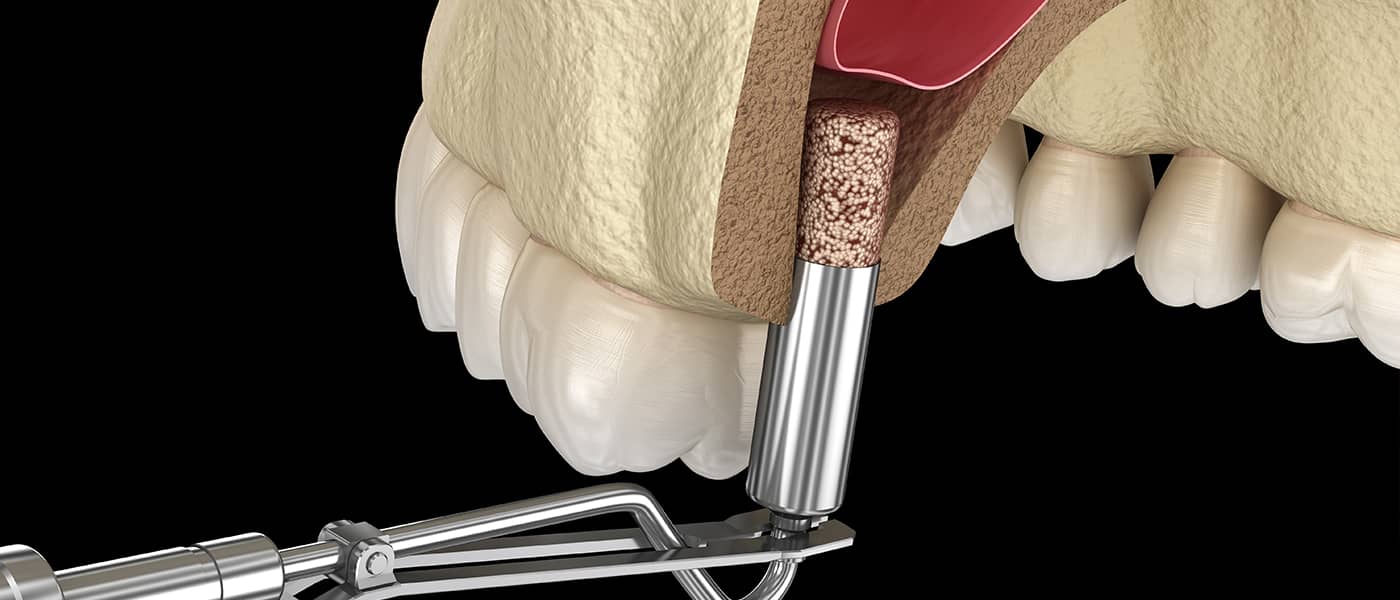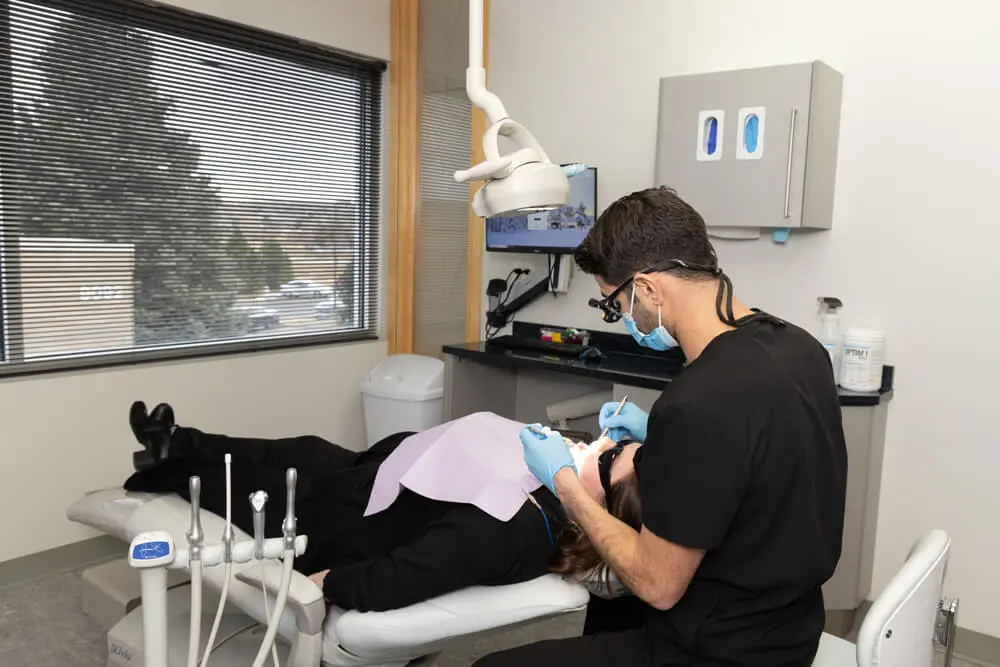Sinus Augmentation

Focus: Learn why this procedure is sometimes necessary before dental implants can be placed in the upper jaw, what the procedure involves, and who can benefit from it.
A sinus lift, also known as a sinus augmentation, is a surgical procedure aimed at increasing the vertical bone height in the upper jaw bone, specifically in the area of the maxillary sinus cavity.
This procedure involves lifting the sinus membrane and placing bone graft material in the space created, allowing for new bone growth. This creates a stronger foundation for dental implants to be placed securely.
Key Takeaway
A sinus lift (sinus augmentation) is needed when there is insufficient bone in the upper jaw to support a dental implant.
The Anatomy of the Sinuses
The sinuses are air-filled cavities located in the skull, with the maxillary sinus being the largest and located near the upper teeth.
Their proximity to the upper jaw often affects dental implant placement due to the residual bone height available beneath the sinus cavity.
Bone loss in the upper jaw, often due to tooth loss or gum disease, reduces the vertical bone height required for implant placement.
Without adequate bone density and the support it provides, dental implants cannot be securely anchored.
Did You Know?
When bone loss occurs in the upper jaw, it creates a hollow space beneath the sinus membrane. The membrane can expand and fill this space. As the name suggests, the sinus is lifted and the bone graft material is placed underneath.
What is a Sinus Lift?
A sinus lift is a bone grafting procedure that aims to increase the height of the bone in the upper jaw by adding bone material beneath the sinus cavity.
This procedure is performed before a dental implant procedure to prepare the jaw for an implant. Bone grafting material is placed below the sinus membrane to promote bone formation.
There are several techniques used to perform this procedure, including lateral window and crestal approach methods.
Lateral Window Technique
The lateral window technique is the most commonly used method for sinus augmentation.
This procedure involves making a small incision in the gum tissue near the back molars to expose the jawbone. Then, a small window is created in the bone, allowing access to the maxillary sinus cavity.
The sinus membrane is gently lifted, and bone graft material is placed beneath it. Once enough bone has been added, the incision is closed with stitches, and the site is left to heal.
Crestal Approach (Sinus Tap)
The transcrestal approach, also known as the crestal approach, is a less invasive technique that is performed from within the mouth.
This technique is less invasive and consists of lifting the sinus membrane by gently tapping the sinus floor and placing the bone graft material simultaneously.
While this procedure is less invasive, the amount of augmentation is limited.
Types of Bone Graft Materials
We offer two types of bone grafts:
- Autograft: Uses healthy pieces of your own natural bone. This type of graft is most commonly used when there is a need for extra height or width on the jawbone.
- Allograft: Uses donor bone to replace lost bone. This is a good option when there is not enough healthy bone available from the patient’s own body.
The type of graft used will depend on the individual patient’s needs and the recommendation of their periodontist.
Benefits of Sinus Augmentation
Sinus augmentation makes it possible for patients with insufficient bone in the upper jaw to receive dental implants, providing them with an effective and long-lasting solution for missing teeth.
Other benefits include:
- Restored chewing function: Dental implants placed on a solid foundation can withstand the force of biting and chewing, allowing patients to enjoy their favorite foods without worry.
- Aesthetics: Dental implants look and feel like natural teeth, enhancing the appearance of the smile and boosting self-confidence.
- Prevents further bone loss: By increasing bone volume in the upper jaw, sinus augmentation also helps prevent future bone loss that may occur due to tooth loss or gum disease.
Candidates for a Sinus Augmentation
Sinus augmentation is an essential procedure for patients who are considering dental implants but lack sufficient bone height in the upper jaw.
Potential candidates include:
- Individuals with tooth loss: Patients who have lost upper teeth, particularly molars or premolars, may experience a reduction in bone density and volume in the posterior maxilla, making sinus augmentation necessary for successful implant placement.
- Individuals with periodontal disease: Chronic gum diseases can result in significant bone loss around the teeth, especially in the upper jaw. Sinus augmentation can help regenerate enough bone to support dental implants.
- Long-term denture wearers: Prolonged denture wear can lead to bone resorption, diminishing the quality and volume of the jawbone over time. Sinus lifts can restore the lost bone, providing a sturdy foundation for implants.
- Individuals with congenital conditions: Some individuals are born with naturally thinner maxillary bone or smaller jaw structures. Sinus augmentation can correct these conditions, facilitating the placement of dental implants.
- Patients with traumatic injuries: Injuries to the facial structure resulting in bone loss in the upper jaw may require sinus augmentation to re-establish the bone height needed for implants.
The Sinus Augmentation Procedure
At your initial consultation for dental implants, we will perform a comprehensive evaluation of your oral health and use x-rays and a CBCT scan to assess the quality and quantity of your jawbone.
Based on these findings, we will determine if sinus augmentation is necessary and create a customized treatment plan for you.
The procedure generally follows these steps:
- Administration of Anesthesia: Sinus augmentation is usually performed using local anesthesia and dental sedation.
- Incision: The gums are gently pulled back to expose the jawbone in the area of the missing tooth or teeth.
- Accessing the maxillary sinus: Depending on the chosen surgical technique, a small window is created in the bone near the sinus cavity.
- Lifting and grafting: The sinus membrane (also referred to as the Schneiderian membrane) is raised, and bone graft material is placed beneath it to increase bone height and volume.
- Implant placement: The dental implant is usually placed at the time of the sinus lift procedure. However, this can vary from patient to patient.
- Closing Incisions: Once enough bone has been added, the incision is closed with stitches and left to heal.
Recovery and Aftercare
After sinus lift surgery, it is normal to experience some swelling, discomfort, and light bleeding.
To minimize these symptoms and promote healing, we recommend the following aftercare tips:
- Take prescribed medication: You may be prescribed pain medication following your procedure. Please take this medication only as directed. Avoid drinking alcohol with these medications. If you’re not prescribed medication, use Tylenol and Motrin to control the pain and swelling.
- Keep nasal passages clear: Use decongestants and do not blow your nose for 10 days after the surgery. Use a saline spray if needed.
- Avoid strenuous activity: Refrain from intense physical activities for a minimum of 7 days.
- Use ice packs: To minimize post-surgical swelling, we recommend using an ice pack for 20 minutes on and then 20 minutes off. Use ice packs for a few days or until the swelling goes down.
- Eat soft foods: Stick to a diet of soft foods like soup, mashed potatoes, or smoothies in the days following your sinus augmentation. DO NOT use a straw as it can dislodge the blood clot or graft material.
- Smoking: Do not smoke for at least 2 weeks after your surgery. Smoking can cause an infection in the wound and can slow the healing process.
- Maintain good oral hygiene: Follow our recommended oral hygiene instructions, such as gentle brushing and rinsing with saltwater, to prevent infection and promote healing.
You will be given post-op instructions before your procedure. We will go over them with you so that you understand what is required of you after surgery. It is very important that you follow these instructions carefully.
Risks and Complications
Like any surgical procedure, there are risks associated with sinus augmentation. These include:
- Infection: Infection may occur in the incision site or in the sinus cavity if proper aftercare is not followed.
- Graft failure: In rare cases, the bone graft material used during the procedure may not integrate successfully, leading to a higher risk of implant failure.
- Schneiderian membrane perforation: The sinus membrane may be accidentally punctured or torn during the procedure, requiring additional surgical intervention.
Having a skilled periodontist perform your surgery will greatly reduce the risk of complications.
Trust the Experts at Highlands Ranch Periodontics & Implant Center
Periodontists are specialized dental professionals who receive extensive training in treating the supporting structures of the teeth, including bone and gum tissue.
Our experienced periodontists, Dr. Mike Norouzinia, DDS, and Dr. Kerri Font, DDS, use the latest techniques and technology to perform sinus augmentation procedures with precision and care.
To schedule a dental implant consultation or to learn more about sinus augmentation, contact Highlands Ranch Periodontics & Implant Center today.
To book an appointment at our periodontal clinic in Highlands Ranch, CO, call (303) 683-1144 or complete the online booking form.
Learn More
Check out our blog to learn more about dental bone grafting procedures and why they are sometimes needed.
- What Happens if You Don’t Replace a Missing Tooth?
- How to Prevent Dental Bone Graft Infection
- Dental Bone Graft Healing Stages: What to Expect
- Types of Dental Bone Grafts: What You Need to Know
FAQs About Sinus Augmentation
Sinus augmentation is performed using local anesthesia and dental sedation, so the procedure itself should not be painful. You may experience some discomfort and swelling following the surgery, but this can be managed with pain medication and proper aftercare.
The length of the procedure can vary depending on individual cases and the chosen surgical technique. On average, it takes about an hour to complete a sinus augmentation.
Recovery from the surgery can take anywhere from a few days to a few weeks, depending on the individual. However, complete healing and integration of the bone graft material may take 6–9 months.
The main downside of a sinus lift is the time it takes for complete healing to occur. Additionally, there is always a risk of complications with any surgical procedure. However, choosing an experienced periodontist and following proper aftercare instructions can greatly reduce these risks.

